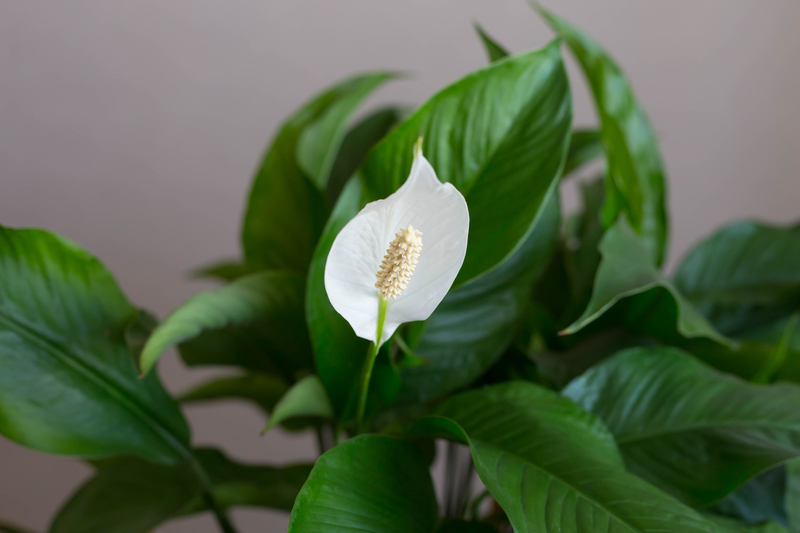Masterful Pruning: UK Garden Tips
Posted on 11/09/2025
Gardening is a deeply cherished tradition in the UK, and mastering the art of pruning can elevate any garden from ordinary to extraordinary. Pruning involves trimming plants to promote healthier growth, manage size, and enhance overall aesthetic appeal. While it may seem straightforward, proper pruning requires knowledge and precision. This comprehensive guide provides essential tips to help UK gardeners achieve masterful pruning results.
Understanding the Basics of Pruning
Pruning is not merely about cutting branches; it's a horticultural practice designed to promote plant health and ensure a well-maintained appearance. Understanding why we prune is the first step to becoming a pruning maestro.
1. Promote Healthy Growth: Removal of dead, diseased, or damaged branches allows plants to allocate resources more effectively towards healthy growth.
2. Control Plant Size and Shape: Regular pruning helps manage the size of trees and shrubs, preventing them from becoming unwieldy or crowding other plants.
3. Enhance Flowering and Fruit Production: Strategic pruning can stimulate blooming and fruiting by encouraging the development of strong, productive branches.
4. Improve Air Circulation and Light Penetration: Thinning out dense foliage enhances airflow and sunlight penetration, reducing the risk of diseases associated with damp, shaded environments.

Essential Pruning Tools
Having the right tools is crucial for effective pruning. Each tool has a specific function, and using them properly will ensure clean cuts and minimize damage to plants. Here's a list of essential pruning tools:
1. Secateurs (Pruning Shears): Ideal for cutting small branches and stems up to 2 cm in diameter. Bypass secateurs, which function like scissors, are generally preferred over anvil types for cleaner cuts.
2. Loppers: These are similar to secateurs but with longer handles, making them perfect for cutting branches up to 5 cm in diameter.
3. Pruning Saws: Essential for cutting larger branches that are too thick for loppers. Look for a saw with a narrow, curved blade for precision.
4. Hedge Shears: Suitable for trimming hedges and shaping shrubs.
5. Long-Reach Pruners: For high branches or awkward angles, long-reach pruners allow for safe pruning without the need for ladders.
Seasonal Pruning Guide
Different plants require pruning at various times of the year. Understanding when to prune is critical to avoid damaging your plants and to promote optimal growth.
Winter Pruning
Winter is an ideal time for pruning many deciduous trees and shrubs. With plant activity at a minimum, pruning wounds heal faster and there is a reduced risk of disease transmission. Key plants to prune in winter include:
1. Apple and Pear Trees: Encourage strong growth and fruit production by thinning out congested branches.
2. Roses: Promote better blooms by cutting back hybrid teas and floribundas.
3. Ornamental Trees: Shape and maintain without the obstruction of leaves.
Spring Pruning
Spring pruning is essential for early-flowering shrubs and climbers. Pruning after they have bloomed ensures that you don't remove flower buds before they have a chance to bloom.
1. Forsythia and Lilac: Prune immediately after flowering to encourage new growth.
2. Clematis: Group 2 and Group 3 clematis benefit from spring pruning to encourage flowering.
3. Hydrangeas: Remove dead or weak stems to promote robust growth and larger blooms.
Summer Pruning
Summer pruning can help control rampant growth and improve air circulation around plants. It's also a good time to shape evergreen hedges.
1. Wisteria: Trim long tendrils to promote flowering and keep growth in check.
2. Stone Fruit Trees: Prune cherries, plums, and apricots to shape and remove diseased wood.
3. Lavender: After blooming, shear back to encourage a more compact shape.
Autumn Pruning
Autumn pruning prepares plants for winter dormancy and reduces the risk of winter damage.
1. Climbing Roses: Cut back to maintain shape and remove weak or crossing branches.
2. Deciduous Shrubs: Light pruning to thin out dense growth.
3. Perennials: Cut back spent flowers and dead foliage.
Pruning Techniques for Different Plants
Each type of plant has distinct pruning needs and techniques. Here's a closer look at specific methods for different plants.
Pruning Shrubs
Shrubs often require selective pruning to maintain shape and encourage healthy growth.
1. Thinning: Remove some stems from the base to reduce density and improve air circulation.
2. Heading Back: Cut back a portion of the stem to encourage lateral growth and create a bushier appearance.
Pruning Trees
Proper tree pruning ensures safety, health, and aesthetic appeal.
1. Crown Thinning: Selective removal of branches to reduce weight and increase light penetration.
2. Crown Raising: Remove lower branches to elevate the crown and allow for clearance under the tree.
3. Crown Reduction: Reduce the overall size of the tree by cutting back branches to an appropriate length.
Pruning Fruit Trees
Fruit trees require specific pruning techniques to enhance fruit production and tree health.
1. Open-Center Pruning: Common for stone fruits, creates a bowl shape with an open center, allowing sunlight to penetrate and air to circulate.
2. Central Leader Pruning: Ideal for apples and pears, maintains a single central trunk with well-spaced lateral branches.

Avoid Common Pruning Mistakes
Even experienced gardeners can sometimes make errors while pruning. Here are some common mistakes to avoid:
1. Pruning at the Wrong Time: Cutting back plants at the wrong time of year can remove flower buds or expose the plant to disease.
2. Over-Pruning: Cutting too much can stress plants and inhibit growth.
3. Improper Cuts: Jagged or incorrect cuts can make plants susceptible to disease. Always cut just above a node or bud and at a slight angle.
4. Ignoring Plant Needs: Each plant has unique requirements. What works for one species may harm another.
Final Thoughts on Masterful Pruning
Mastering the art of pruning is both a science and an art form that can transform any garden into a lush, vibrant haven. By understanding the essentials, using the right tools, and following seasonal guidelines, you can ensure that your plants thrive year-round. Remember, pruning is not just about cutting; it's about fostering healthier, more beautiful plants.
Whether you're trimming a towering oak or a delicate rose, always approach each plant with care, respect, and the knowledge accumulated through your gardening journey. Happy pruning!




